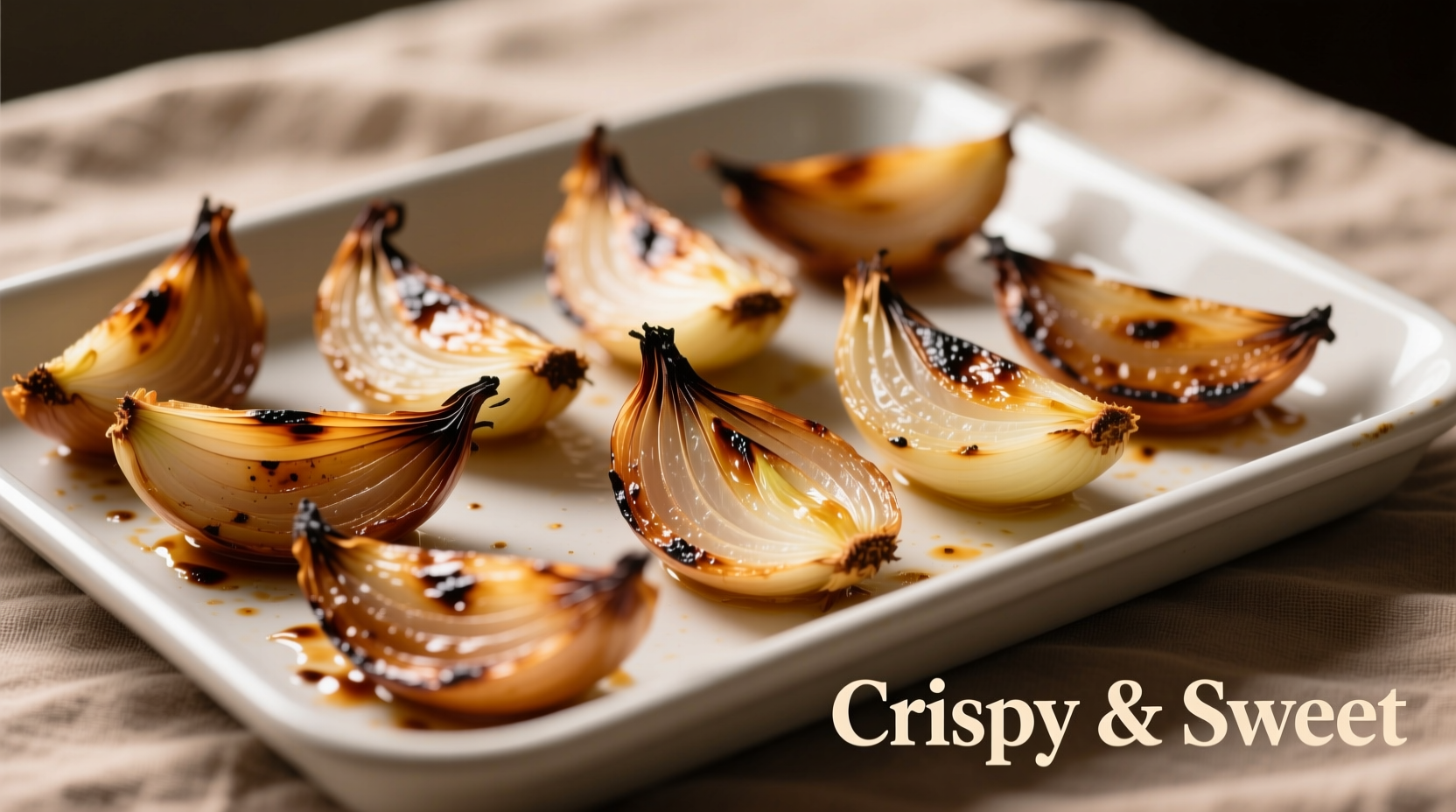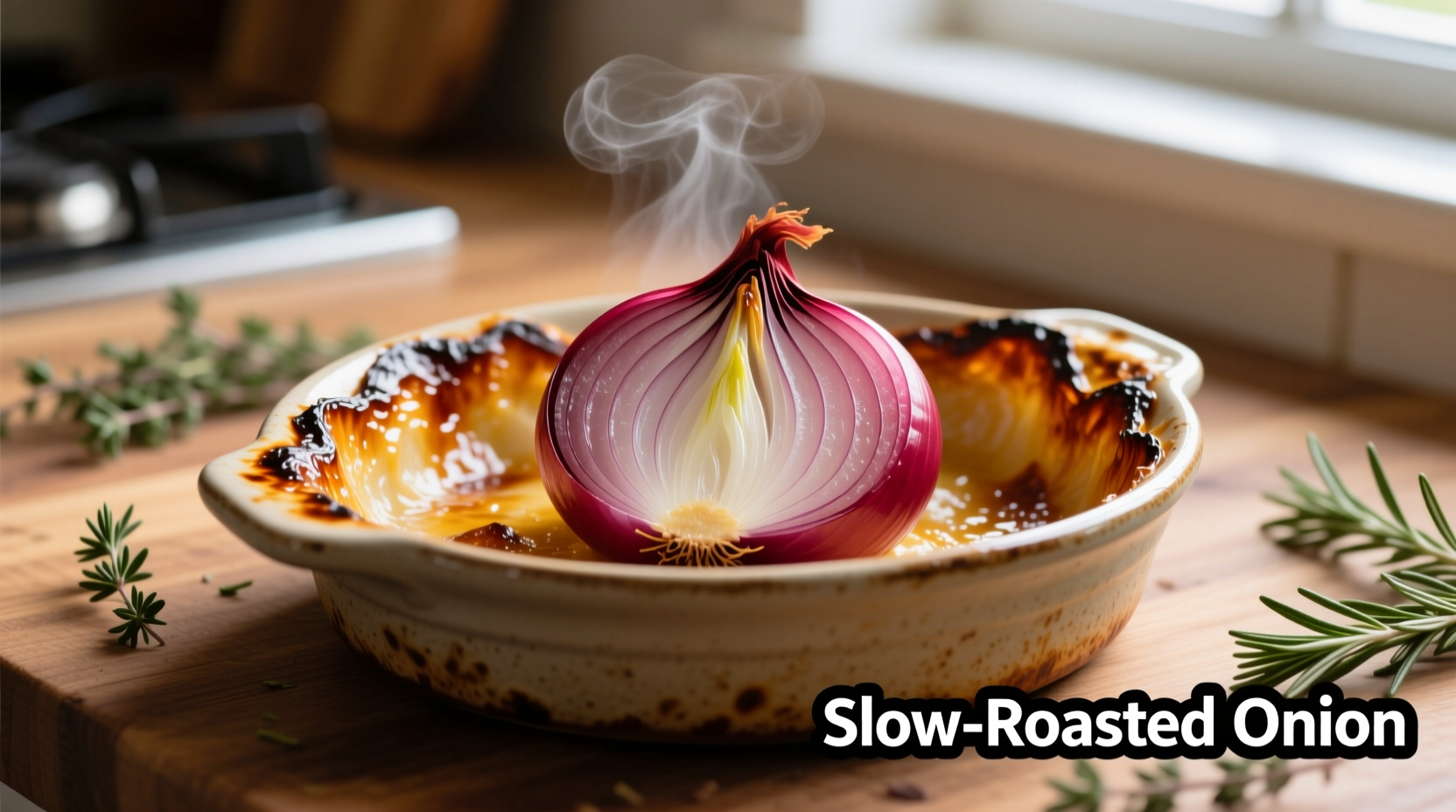Roasting onions in the oven transforms their sharp bite into complex sweetness through slow caramelization. Unlike stovetop methods that require constant attention, oven roasting delivers hands-off perfection with even cooking and minimal risk of burning. This technique works for yellow, red, or sweet onions and creates versatile ingredients for salads, sandwiches, pizzas, or as standalone sides.
The Science Behind Perfect Oven Roasted Onions
When onions roast slowly in the oven, two key processes occur: water evaporation concentrates their natural sugars, while the Maillard reaction creates hundreds of new flavor compounds. According to research from the USDA Food Safety and Inspection Service, onions reach optimal caramelization between 375–425°F (190–220°C), where sugars break down without burning.
Professional chefs prefer oven roasting over stovetop methods because it provides consistent heat distribution. As Antonio Torres, chef instructor at the Culinary Institute of America explains: “The dry, ambient heat of an oven allows onions to cook evenly from all sides, preventing the common stovetop problem of exterior burning before interior softening.”
| Onion Type | Cooking Time | Best For |
|---|---|---|
| Yellow Onions | 35-45 minutes | General cooking, rich flavor |
| Red Onions | 30-40 minutes | Salads, vibrant color |
| Sweet Onions | 25-35 minutes | Quick roasting, milder flavor |
Essential Equipment Checklist
You don't need specialized tools for perfect oven roast onion results:
- Baking sheet – Rimmed pans prevent oil pooling
- Parchment paper – Eliminates sticking without excess oil
- Sharp chef's knife – Ensures clean cuts that maintain structure
- Oven thermometer – Verifies accurate temperature (critical for consistent results)
Food scientist Dr. Harold McGee notes in On Food and Cooking that parchment paper creates a microenvironment that helps onions release moisture gradually, preventing steaming that would inhibit caramelization.
Step-by-Step Roasting Process
Preparation: Cutting for Even Cooking
How you cut onions determines cooking time and texture:
- Peel onions and trim root/stem ends
- For wedges: Cut vertically from root to stem into 6-8 equal pieces
- For slices: Cut horizontally into 1/2-inch thick rounds
- For whole small onions: Leave intact with root end slightly trimmed
Seasoning: The Perfect Ratio
Use this professional chef formula for foolproof seasoning:
- 1 pound onions = 1–2 tablespoons oil (avocado or olive)
- 3/4 teaspoon kosher salt
- 1/4 teaspoon freshly ground black pepper
- Optional: 1 teaspoon fresh thyme or rosemary
Toss ingredients thoroughly in a bowl before spreading on baking sheet in single layer with cut sides down for maximum caramelization.
Roasting: Temperature & Timing Guide
Follow these precise parameters for perfect oven roast onion results:
- Temperature: 400°F (205°C) convection or 425°F (220°C) conventional
- Time: 35-45 minutes for wedges, 25-35 for slices
- Doneness test: Insert knife—should slide in with no resistance
- Visual cue: Deep golden brown edges with soft, translucent centers

Troubleshooting Common Problems
Burning vs. Undercooking
The most frequent oven roast onion issues stem from temperature inaccuracies. Oven thermometers from the National Institute of Standards and Technology show home ovens often vary by ±25°F. If onions burn outside but stay firm inside:
- Reduce temperature by 25°F
- Cover loosely with foil after 25 minutes
- Spread onions in single layer with space between pieces
Moisture Management
If onions steam instead of roast:
- Pat onions dry before oiling
- Avoid overcrowding the pan
- Use parchment paper (not silicone mats which trap moisture)
Flavor Variations & Culinary Applications
Elevate your oven roast onion technique with these chef-approved enhancements:
Acid Balance
Add 1 tablespoon balsamic vinegar or lemon juice during the last 10 minutes of cooking. The acid cuts through sweetness and enhances complex flavor development, as documented in Serious Eats' flavor science research.
Perfect Pairings
- Proteins: Serve alongside roasted chicken or steak
- Grains: Mix into quinoa or farro salads
- Sauces: Blend with broth for instant onion soup
- Breakfast: Top eggs or frittatas
Storage & Reheating Guidelines
Store cooled roasted onions in airtight container for up to 5 days. For best texture when reheating:
- Oven method: 350°F for 8-10 minutes on baking sheet
- Skillet method: Medium heat with teaspoon oil for 3-4 minutes
- Avoid microwave: Creates uneven texture and sogginess
Freeze roasted onions in single layer on baking sheet, then transfer to freezer bags for up to 3 months. No need to thaw before reheating—just add 5-7 minutes to oven time.











 浙公网安备
33010002000092号
浙公网安备
33010002000092号 浙B2-20120091-4
浙B2-20120091-4